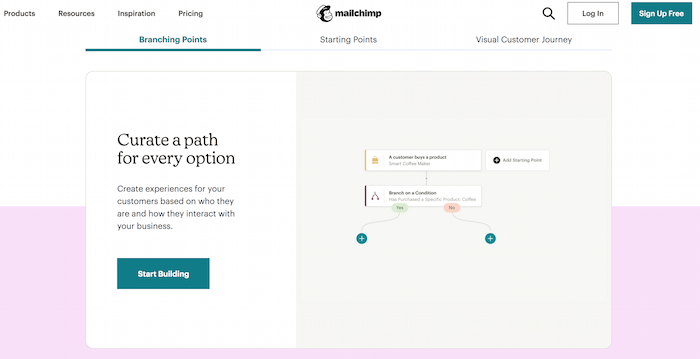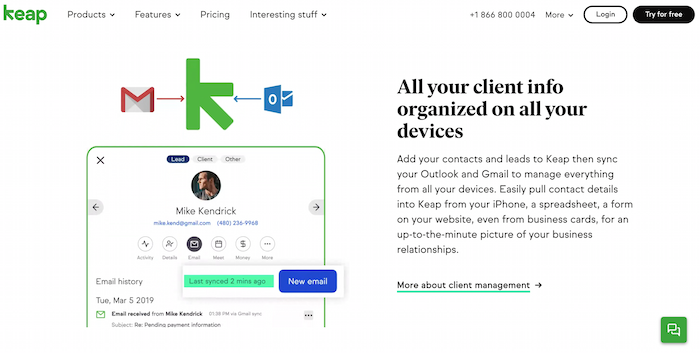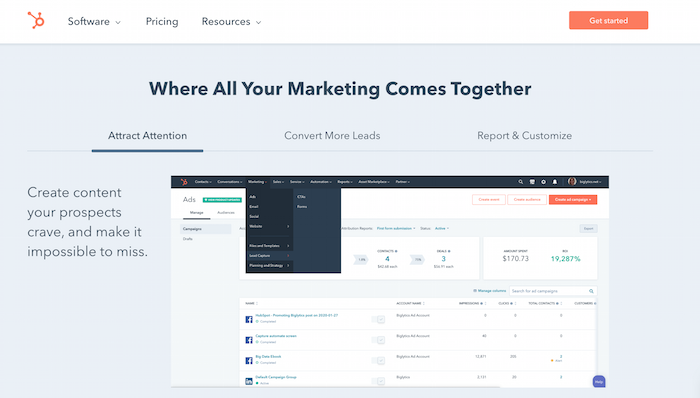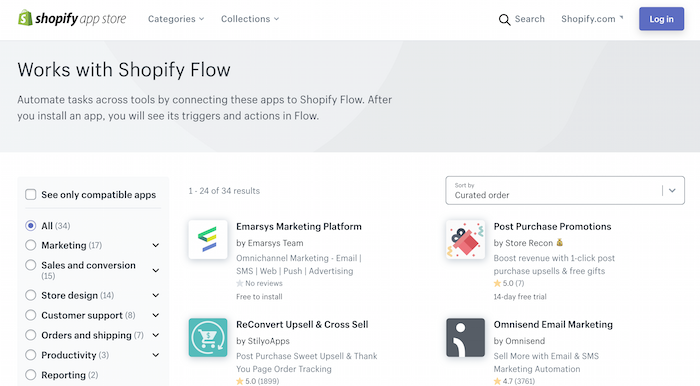Running an e-commerce store is a lot of work, but you already know that. You’re experiencing it every day, from marketing and communication to fulfillment and shipping, not to mention all the follow-up. And everything else in between. Sometimes it can feel like you’re doing so many little things just to keep the business going, so you don’t have time to focus on the big picture, taking your business to the next level.
That’s where e-commerce automation comes in. What if things just happened, without all the legwork each time? E-commerce automation is the magic sauce to free you from the mundane.
What is E-Commerce Automation?
We’ve talked about automated e-commerce emails before, so you may be familiar with that option, but when it comes to e-commerce automation, the sky’s the limit.
E-commerce automation is any digital or technologically-driven task triggered by an action or non-action from a customer, your team, etc.
In simplified terms, it’s a task happening automatically, using software or online systems, without human intervention. You set it up, and it runs.
For example, in marketing, certain ads or emails are triggered to go to target audiences.
In sales, customers with empty carts can receive a reminder message. Shoppers with questions are offered a chatbot.
In fulfillment, orders can trigger messages to help you manage inventory, including “sold out” notifications.
The list goes on.
How Can E-Commerce Automation Help My Business?
More and more people are shopping online, giving e-commerce the advantage over brick-and-mortar stores. Meanwhile, Forbes reports that consumers have increased expectations for faster and more convenient deliveries. To stay competitive, business owners must find ways to move faster and stay nimble.
E-Commerce Automation Saves Time
Automating repetitive tasks can suddenly free up time. If you don’t have to track remembering to do them and making them happen, imagine what you could do with the extra time.
Think about those mundane tasks you have to do over and over again, including data entry, customer emails, social media, and more. The more you can automate, the more gets done even without you.
With e-commerce automation, you can schedule sales promotions to go live at the right time, automate new product releases with their announcements, remove discontinued products, adjust prices, apply discounts, track purchases and provide rewards, etc.
But it’s more than getting the actual tasks done. E-commerce automation can do them better in many cases, saving you from having to go back and correct errors. When data is sent from one platform to the other, the chances of human error are lessened. Although, it’s never a bad idea to go back and check in periodically to fix any mistakes.
E-Commerce Automation Increases Worker Engagement
What if you could announce to your team tomorrow, “Good news. That mundane task sucking the life out of you every Monday? It’s gone.” You’d probably increase employee satisfaction, right?
That’s exactly what e-commerce automation can do for your whole team. Instead of having to do data entry every morning, they can just check in with the system periodically, as it makes sense.
Now they are free to do the big picture stuff they came on board for: strategy, learning, growth in their fields. It could breathe new energy and excitement into the team.
E-Commerce Automation Helps Customer Satisfaction
Happy customers are more likely to be repeat customers. New customers can cost you about five times more than selling to repeat customers, according to Invesp. E-commerce automation can help you keep customers happy, and turn them into repeat customers, even as you scale to reach a greater audience.
Yes, it’s easy to stay engaged with customers when you have a handful, but what happens when you have hundreds, thousands, and more? You just can’t be there for all of them.
As you automate things, you can improve the customer experience at your shop. Customers can find what they are looking for more quickly and purchase what they want more easily, while not being bogged down by unavailable products, etc.
Easier Onboarding With E-Commerce Automation
As with customers, keeping suppliers happy in their interaction with your brand is key to profitable long-term relationships. Various e-commerce automations can keep the relationship engaging and moving forward.
Automated supplier portals can give employees more time to focus on company growth, as we discussed above. Meanwhile, new vendors and suppliers can take the lead in setting themselves up in your system. Of course, you’ll want to be there for questions and customer service, although much of that can be automated as well. Vendors will appreciate the system moving quickly and seamlessly without relying on human intervention throughout the process. Since the vendors and suppliers are in charge of their orders and requests, nothing gets lost in translation.
Fewer opportunities for error and fewer problems with supplier/vendor relationships mean you can get back to the business of growth and wowing the world with your brand.
Simpler Deliveries With E-Commerce Automation
Is there anything worse than lost or misdirected packages after you place an order?
E-commerce automation systems process orders directly from the customer, printing receipts and shipping labels rather than having a person type them manually, which saves time and prevents the recurrence of mistakes.
As customers make package tracking a priority, businesses need to know where packages are for customer service and quality assurance purposes. E-commerce automation options can communicate tracking information automatically.
How Do I Know What to Use E-Commerce Automation for?
Now that we’ve shared the reasons your business can’t go on without at least some automation, how do you even know where to start?
It’s true the options are seemingly endless, so before we dive into some examples of great products you could be using to automate your e-commerce store, let’s look at how to decide.
Find the Pain Points
Where is your workflow bottling? If you’re unsure, reflect on issues customers have reported and feedback you’ve received from your employees. Those are the needs to address first, to leave the biggest impact. If you see needs in a couple of different areas, look for e-commerce automation systems to cover where those issues intersect. For instance, maybe you need a better CRM tool to help you improve customer communication before and after a sale.
Analyze the Big Picture
It can be difficult when you’re in the weeds of your business, but looking at the big picture can show you where the holes are. Which areas of growth are constantly being held back? What are you trying to launch that just keeps getting stymied? Integrating e-commerce automation can free up time and energy in those areas for deeper strategic thinking, research, experimentation, and, hopefully, growth.
When in Doubt, Start With Communication
If you’re still unsure where to begin, marketing e-commerce automation can be a great place to start. There are opportunities throughout the sales funnel, from the top when you’re first connecting with a prospect to converting a new user, as well as reselling and upselling to existing customers. Communicating authentically using automation is almost a no-brainer.
What E-Commerce Automation Tools Should I Use for My Business?
It may take some experimenting, but we’ve found these programs may be worth exploring. While there are countless options available, these tend to be popular across many industries.
ZenDesk
If customer service or sales communications is where you see the bottleneck, ZenDesk may have the solutions you need to integrate both internally and in your customer outreach. There are two main facets of ZenDesk, with lots of customizable choices in each platform.
ZenDesk Support Suite
You may have encountered the ZenDesk support features already through a brand you’ve been researching online. Many customers may not need to speak directly to someone at your company to get their questions answered. You can create a robust, interactive FAQ section.
You can also create customer service layers, from self-service to live chat with a customer service agent. One of the powers of the ZenDesk support suite is the omnichannel options. You can set up the system for customers to send in their questions or concerns via email, text, or live chat on your website, and other channels.
In addition, you’ll have access to customer service reports to help you understand what people are asking, how often, and how long it’s taking to get to a resolution. From there, you can tighten up your processes to improve the customer experience.
Mailchimp
Mailchimp sends e-newsletters, right? Well, when it comes to automation, they can do much more. Imagine sending just the right communication to just the right kind of customers, and you’re just scratching the surface of how Mailchimp can revitalize your marketing efforts.
Through “Customer Journeys” you can create a series of emails to go out to target markets, depending on any number of trigger points, including interaction on your website or when connecting with your customer service or sales teams.

Once they’ve made that purchase, there are so many more ways you can be connecting with them using Mailchimp. Shipping and delivery notifications, how-tos and suggestions, follow-up and feedback are just a few of the marketing automation emails you could be sending.
Keap
Keap is an all-in-one e-commerce solution with a focus on helping service-based small businesses succeed with automation. They offer templates e-commerce companies can use to create automated email blasts, reminders, and lost lead actions to grow your sales and build customer loyalty.
They are a great option to explore if you’ve found your business is being held together with Post-it notes, spreadsheets, and scraps of paper you can’t keep losing. Keap pulls it all together, from your existing client base to prospect CRM, to all your communications, invoices, quotes, and more.

By keeping everything in Keap, you can feel more confident that you aren’t going to lose an opportunity or overlook a client.
HubSpot
HubSpot is a powerful tool that we’ve discussed before for any business looking to scale. While there is a paid version that may be out of the price range for many, HubSpot offers several features for free.

HubSpot’s tools include the Marketing Hub, Sales Hub, Service Hub, and Content Management System Hub. The free features can allow you to email templates, set up customer service ticketing, generate new leads, and create smart content.
Shopify
Shopify not only comes with many automation options through Shopify Flow, but you can also connect various integrations through their app store.

If you aren’t already using an e-commerce platform like Shopify, you may want to consider the benefits of having all your information right there in one place. As you grow, utilize more of the Shopify Flow options and integrations to take advantage of their systems.
Conclusion
After reading all of this information about what e-commerce automation can do for your company, you may be overwhelmed. If you are suffering from paralysis by analysis, remember this is about saving you time. Time you can use on bigger or better things.
Don’t get lost in all the bells and whistles clamoring for your attention. Choose the process that needs attention first and will help you boost your e-commerce sales. Then find the automation tool that seems most intuitive for you. Dive in and start saving time.
What’s the next e-commerce task you’re ready to automate?

